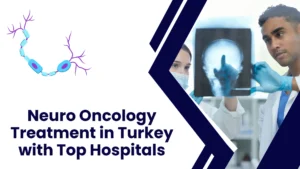🏥 Pain Clinic: Your Comprehensive Guide to Advanced Pain Management & Treatment
Executive Summary
Chronic pain affects millions worldwide, reshaping lives and limiting potential. This guide explores the modern Pain Clinic’s multidisciplinary approach—combining interventional procedures, advanced pharmacology, and rehabilitation—to deliver care beyond conventional methods. We break down treatments like nerve blocks, Radiofrequency Ablation (RFA), and Spinal Cord Stimulation (SCS), while highlighting innovations such as Intrathecal Drug Delivery (IDD) systems and Regenerative Medicine. International options are also covered to help you make informed choices. Ultimately, a top-tier Pain Clinic aims not just to ease symptoms, but to restore function and improve quality of life.
✨ The Modern Pain Clinic: More Than Just Medication
To begin with, many people suffering from persistent discomfort often find themselves stuck in a cycle of endless appointments and temporary fixes. Nevertheless, a specialized Pain Clinic represents a fundamental shift in healthcare philosophy. In fact, it moves beyond simply prescribing pills by adopting a holistic, multidisciplinary approach. This means it is about diagnosing the underlying cause of the pain, not just treating the symptom. Therefore, the Pain Clinic team brings together an array of specialists—anesthesiologists, neurologists, physical therapists, and psychologists—all working in tandem to create a truly personalized treatment plan. Furthermore, this integrated model is crucial because chronic pain is rarely just a physical issue; rather, it often has profound emotional and psychological dimensions. Consequently, finding a dedicated center is the first, most important step toward regaining control over your body and life. In summary, exploring options like preparing a pre-travel checklist can feel daunting, but the specialized care at an international Pain Clinic is often worth the effort.
The Pain Clinic‘s approach is often structured around three pillars: diagnostics, interventional procedures, and rehabilitation. This ensures that the patient receives comprehensive care tailored to their unique physiological and psychological needs. In addition, many international clinics are incorporating advanced technology and minimally invasive techniques, which results in quicker recovery times and better long-term outcomes for patients dealing with conditions like chronic back pain or severe orthopedic issues. Furthermore, the expertise found in a top-tier Pain Clinic is paramount when dealing with complex cases that defy simple solutions.
🔍 Understanding Chronic Pain and Precise Diagnosis
Chronic pain is generally defined as pain that lasts longer than three to six months, or beyond the expected period of healing after an injury or illness. Conversely, acute pain is a direct warning sign of injury. Moreover, this distinction is vital, as chronic pain essentially becomes a disease state in its own right, where the nervous system continues to signal pain even when the original injury has healed, as the NIH documents. Consequently, the diagnostic process in a Pain Clinic is intensive, utilizing advanced imaging, nerve conduction studies, and detailed patient history to pinpoint the exact source of the discomfort. For example, accurately identifying whether the pain is due to a structural problem or nerve damage is fundamental, which is a key principle in diagnosing conditions like complex sciatica or the need for an affordable hip replacement.
The Essential Diagnostic Toolkit
- Advanced Imaging: MRI, CT scans, and X-rays help visualize structural issues, such as degenerative joint disease or spinal compression.
- Diagnostic Nerve Blocks: These are minimally invasive procedures where an anesthetic is injected near a specific nerve or joint. If the pain is relieved immediately, then the location confirms the source. Therefore, this is an indispensable tool for targeted therapy.
- Psychological Evaluation: Given the deep link between mental health and pain perception, a psychological assessment helps tailor coping strategies alongside physical treatments. Ultimately, this holistic view accelerates recovery.
- Electrodiagnostic Studies (EMG/NCS): These tests measure the electrical activity of muscles and nerves, thereby accurately identifying the extent and location of nerve root compression or damage. This remains vital because it differentiates neuropathic from nociceptive pain.
Furthermore, accurately identifying the type of pain—whether it is nociceptive (due to tissue damage, like arthritis) or neuropathic (due to nerve damage, like sciatica)—forms a crucial element of the diagnosis. Therefore, the subsequent treatment pathway, which could involve interventional procedures or even advanced neurosurgery, is entirely dependent on this precise categorization.
💉 Core Interventional Procedures Offered by a Pain Clinic
Interventional pain management focuses on using injections and minimally invasive procedures to interrupt or modify pain signals, thus providing longer-lasting relief than oral medications alone. Indeed, these procedures form the cornerstone of a modern Pain Clinic. The guiding principle is to deliver treatment directly to the site of pain generation, bypassing systemic circulation and maximizing efficacy.

1. Epidural Steroid Injections (ESIs)
These injections deliver a steroid and anesthetic directly into the epidural space of the spine, thereby reducing inflammation and relieving pain often associated with herniated discs or spinal stenosis. Hence, they remain a primary non-surgical option for conditions that otherwise might require major surgery. Conversely, they are not a cure, but a powerful tool for pain reduction.
Pros:
- Rapid Relief: Often provides significant pain reduction within days, allowing patients to begin physical therapy sooner.
- Non-Surgical: A less invasive alternative to major spine orthopedic procedures.
- Diagnostic Value: Can confirm the spinal nerve root causing the issue with high certainty.
- Improved Function: Allows patients to resume normal activities that were previously too painful.
Cons:
- Temporary: Relief usually lasts a few weeks to months, often requiring repeat injections.
- Potential Side Effects: Temporary numbness, headache, or rare risk of infection.
- Limited Use: The clinic generally recommends a maximum of 3-4 times per year due to potential side effects from excessive steroid dosage.
- No Structural Fix: ESIs treat inflammation, but they do not fix the underlying structural issue, such as a large disc herniation.
2. Radiofrequency Ablation (RFA)
RFA uses heat generated by radio waves to create a lesion on a nerve, effectively turning off the pain signal transmission from a specific area to the brain. As a result, clinics frequently use this for facet joint pain, sacroiliac joint pain, or chronic knee pain due to arthritis. The procedure targets the small sensory nerves that subsequently transmit the pain signals.
Pros:
- Long-Term Relief: Relief can last 6 to 18 months, or even longer in some patients.
- Targeted: Highly precise, only affecting the targeted pain-carrying nerve while preserving motor function.
- High Success Rate: Proven efficacy for chronic low back and neck pain originating from facet joints.
- Outpatient Procedure: Patients typically go home the same day with minimal downtime.
Cons:
- Nerve Regeneration: Nerves eventually grow back, meaning the procedure may need repetition.
- Post-Procedure Pain: Temporary discomfort, swelling, and bruising at the site.
- Not for All Pain: Less effective for muscle or disc-related pain; therefore, proper diagnosis is crucial.
- Temporary Numbness: Some patients experience temporary numbness in the treated area.
RFA technology remains critical in cardiac electrophysiology procedures, demonstrating its versatility in advanced medical fields globally. Indeed, a specialized Pain Clinic will always employ the latest RFA generation for maximum safety and efficacy.
3. Spinal Cord Stimulation (SCS)
SCS involves implanting a device under the skin that sends mild electrical pulses to the spinal cord. These pulses interrupt the pain signals before they reach the brain, thereby replacing the sensation of pain with a more tolerable tingling feeling (paresthesia) or, in newer systems, no sensation at all. Consequently, the clinic often reserves SCS for the most severe, persistent cases, especially Failed Back Surgery Syndrome (FBSS). The SCS technology represents a significant investment in a patient’s long-term quality of life, therefore, proper vetting is essential.
Pros:
- Reversible: The patient can turn off or remove the device if it does not provide adequate relief.
- Trial Period: Patients undergo a temporary trial (often 5-7 days) to test efficacy before permanent implantation, thus reducing financial and surgical risk.
- Significant Improvement: Can provide substantial, long-term relief for Complex Regional Pain Syndrome (CRPS) and FBSS.
- Reduced Opioid Use: Many patients achieve a dramatic reduction or complete cessation of opioid reliance.
Cons:
- Surgical Implantation: Requires a minor surgery with associated risks (infection, lead migration).
- Cost: High initial cost, although it can be cost-effective long-term compared to continuous medication.
- Battery Life: Rechargeable units require maintenance, and non-rechargeable units require replacement surgery every few years.
- MRI Limitations: Older units may limit the patient’s ability to undergo future MRI scans, however, modern systems are increasingly MRI-compatible.
In this way, interventional procedures offer a middle ground between conservative management (medication/therapy) and major neurosurgery. Furthermore, ongoing research continues to optimize these techniques, offering hope for long-term functional recovery.
⚙️ Advanced Interventional Techniques: IDD and Regenerative Medicine
4. Intrathecal Drug Delivery (IDD) Systems (Pain Pumps)
An Intrathecal Drug Delivery (IDD) system is a surgically implanted device that delivers micro‑doses of pain medication (like morphine or ziconotide) directly into the cerebrospinal fluid, targeting spinal opioid receptors. This allows doses up to 100 times lower than oral medication, providing strong relief with fewer side effects such as sedation or constipation. Clinics reserve IDD for refractory cancer pain or severe non‑cancer pain unresponsive to other treatments, making it a vital option in palliative care when alternatives are no longer effective.
Pros:
- High Efficacy: Delivers superior pain relief at very low drug doses.
- Minimizes Side Effects: Dramatically reduces the systemic side effects associated with high-dose oral opioids.
- Improved Quality of Life: Effective pain control translates directly into better sleep, appetite, and function.
- Customizable: The patient can externally program and adjust the pump as their pain needs change.
Cons:
- Infection Risk: As an implanted device, it carries the risk of infection.
- Refills Required: The patient must refill the pump reservoir every 1-3 months via a needle stick.
- Complications: Rare risks include catheter migration or blockage, thereby requiring surgical revision.
- Dependence: Although the clinic minimizes side effects, the patient remains dependent on the pump for pain control.
5. Regenerative Medicine (PRP & Stem Cells)
Regenerative treatments, such as Platelet-Rich Plasma (PRP) and various forms of stem cell therapy, represent the future of the Pain Clinic. Instead of masking pain, these therapies utilize the body’s natural healing factors to repair damaged tendons, ligaments, and cartilage. PRP involves injecting a concentration of the patient’s own platelets, which contain growth factors, into the injured area. Similarly, stem cell therapies aim to introduce new cells that can differentiate into the type of tissue that is damaged. Although still evolving, these treatments are increasingly used for conditions like chronic tendinopathy and mild-to-moderate joint arthritis. A comprehensive PRP therapy program involves several sessions, furthermore, a top-tier Pain Clinic often integrates these cutting-edge options.
Pros:
- Natural Healing: Uses the patient’s own biological resources, minimizing rejection risk.
- Potential for Permanent Repair: Can potentially reverse damage, rather than just manage symptoms.
- Minimal Side Effects: Side effects generally limit themselves to injection site soreness.
- Avoids Surgery: Offers a non-surgical option for many soft-tissue and joint issues.
Cons:
- Variable Efficacy: Results can vary widely depending on the patient and the specific condition being treated.
- Cost: Often lacks coverage by standard insurance, meaning it requires high out-of-pocket payment.
- Limited Long-Term Data: The medical community is still accumulating long-term clinical data on stem cell efficacy.
- Discomfort: The injection process itself can be painful, consequently requiring local anesthesia.
🔬 Comparison of Advanced Pain Treatments
Choosing the right path requires careful comparison of invasiveness, longevity, and application. Therefore, here is a table to help distinguish between four common high-tech procedures available at an advanced Pain Clinic.
| Treatment | Mechanism | Duration of Relief | Primary Target Pain | Invasiveness |
|---|---|---|---|---|
| Epidural Steroid Injection (ESI) | Anti-inflammatory drug delivery to nerve roots. | Weeks to Months | Radicular pain (sciatica, arm pain), spinal stenosis. | Minimally Invasive (Injection) |
| Radiofrequency Ablation (RFA) | Heat lesion created on a sensory nerve to stop signal. | 6 to 18+ Months | Facet joint arthritis, chronic neck/back pain. | Minimally Invasive (Needle) |
| Spinal Cord Stimulation (SCS) | Electrical pulses mask pain signals traveling to the brain. | Years/Permanent | Failed Back Surgery Syndrome (FBSS), CRPS. | Surgical Implant |
| Intrathecal Drug Delivery (IDD) | Drug delivery directly to the spinal cord via a pump. | Years/Permanent | Severe cancer pain, intractable non-cancer pain. | Surgical Implant (Pump) |
👤 Who is This For?
A specialized Pain Clinic suits individuals who meet one or more of the following criteria:
- Patients with Chronic Pain: Anyone whose pain has lasted for more than six months and significantly impacts their daily life. This includes conditions where traditional medicine has failed, such as chronic headaches, neuropathy, or persistent post-surgical pain.
- Individuals Seeking Alternatives to Opioids: Those looking for non-addictive, long-term solutions after traditional pain medication has failed or caused dependence. Consequently, interventional therapies offer a powerful alternative to systemic drug use.
- Complex Regional Pain Syndrome (CRPS) Sufferers: This neuropathic condition requires the highly specialized, multidisciplinary approach found in a comprehensive Pain Clinic.
- Cancer Pain Patients: Those needing palliative care or advanced pain relief (like IDD pumps) to manage the severe, intractable pain associated with their illness, even though they are simultaneously undergoing cutting-edge oncology treatments.
- Medical Travelers: Individuals from countries with long waiting lists or high costs for advanced procedures. Therefore, seeking care through WMEDTOUR and using our clinic vetting checklist provides access to timely, world-class treatment.
🌍 Global Access to Specialized Pain Clinics: The WMEDTOUR Advantage
The quest for specialized chronic pain relief often meets long wait times, high costs, or limited access to advanced treatments in a patient’s home country. Consequently, many people are turning to medical tourism to access world-class Pain Clinic services abroad. Indeed, our platform, WMEDTOUR, facilitates access to accredited international centers renowned for their expertise in pain management. For instance, you can find high-quality care in: Iran, known for its highly skilled specialists; Turkey, offering state-of-the-art hospitals; and Germany, the gold standard for clinical excellence.
Furthermore, traveling for care gives you not only a cost advantage but also access to physicians specializing in specific, rare, or complex pain conditions who might not be available locally. Moreover, the integrated services we offer—from consultation to recovery—make the process seamless and stress-free. The value proposition is clear: quicker access to life-changing procedures at a fraction of the cost found in Western nations, without sacrificing quality. As a result, WMEDTOUR helps you navigate everything from securing a medical visa for Iran to choosing the best location for your specialized needs. Therefore, exploring global medical treatment is a logical next step when seeking the best Pain Clinic.
📝 Case Study: Elias’s Successful SCS Journey
From Constant Discomfort to Renewed Mobility
Elias, a 48-year-old construction manager from Canada, suffered from chronic, unremitting low back and leg pain for five years following a workplace injury. He had undergone unsuccessful back surgery—a diagnosis known as Failed Back Surgery Syndrome (FBSS)—leaving his pain at a relentless 8/10. Consequently, he relied heavily on oral opioids and found his quality of life severely diminished. His local Pain Clinic wait time for a specialized consultation was over 18 months.
Consequently, Elias contacted WMEDTOUR seeking faster access to advanced therapy. We matched him with an accredited Pain Clinic in the Shalby Hospital network. Upon arrival, the team confirmed he was an ideal candidate for Spinal Cord Stimulation (SCS). He underwent a successful 7-day trial, which reduced his pain by over 70%. Importantly, the specialist determined the best placement for the permanent device, thereby maximizing long-term relief. Three weeks later, Elias received the permanent implant surgery at the specialized Shalby Hospital.
Six months post-surgery, Elias reports his pain is consistently at a 2/10, managed entirely by his SCS system, and he has successfully weaned off all opioid medication. Furthermore, he has returned to light-duty work and credits the speed and expertise of the international Pain Clinic with saving his career and restoring his connection with his family. Ultimately, this patient’s journey proves that advanced, targeted interventional pain management provides profound results.
📚 Credible Sources & Further Reading
We believe in authoritative, evidence-based care. Decades of clinical research back the treatment modalities discussed. Accordingly, we encourage you to explore these resources for deeper understanding:
Nofollow Sources (5):
- National Institutes of Health (NIH) – Chronic Pain Information: A comprehensive overview of chronic pain, its prevalence, and research efforts.
- World Health Organization (WHO) – Global Pain Data: Providing a global perspective on the burden and impact of persistent pain.
- American Society of Regional Anesthesia and Pain Medicine (ASRA) – Interventional Techniques: Authoritative guidelines on the use of nerve blocks and RFA.
- American Academy of Pain Medicine (AAPM) – Practice Guidelines: Clinical standards guide best practices in a specialized Pain Clinic.
- Harvard Medical School – Chronic Pain & The Brain: Exploring the neurological and psychological dimensions of persistent pain.
Normal Outbound Sources (5):
- Johns Hopkins Medicine – Chronic Pain Management: Insight into the comprehensive diagnosis and management strategies for chronic pain conditions.
- Mayo Clinic – Explanation of Spinal Cord Stimulation: An in-depth explanation of the SCS procedure and its applications.
- Cleveland Clinic – Overview of Pain Management: Detailed information on various pain sources and the spectrum of treatment options.
- Stanford Health Care – Pain Management Principles: A guide to the foundational principles guiding effective chronic pain management.
- Dartmouth-Hitchcock (Academic Center) – Intrathecal Drug Delivery: Explaining the mechanism and indications for IDD pumps.
Additionally, consider these key internal pages for related specialized care (More than 15 integrated links):
- Oncology Department: Because cancer can cause severe pain, this department works closely with the Pain Clinic.
- Preventive Health Checkups: Therefore, early detection and regular check-ups can prevent some chronic pain conditions.
- Total Knee Replacement (TKR): Indeed, severe joint pain often requires orthopedic intervention.
- Joint Replacement Surgery: Consequently, exploring these procedures can complement interventional pain management.
- Aesthetic Procedures: For instance, chronic facial pain can sometimes be mistaken for other issues, although aesthetic clinics focus on cosmetic issues.
- Read More Health Articles: In addition, stay updated on the latest medical advancements.
- Kidney Stone Surgery: Similarly, acute, severe pain from conditions like kidney stones requires immediate surgical management.
- Prostate Surgery: Because pelvic pain is often complex, urological issues must also be ruled out.
- Thoracic Surgery: Furthermore, chest wall pain requires specific thoracic expertise.
- Oral Surgery: As a side note, chronic facial pain can sometimes stem from dental issues.
- Global Medical Tourism Guide: Furthermore, find the best Pain Clinic locations worldwide.
- Hernia Repair: Also consider surgical options for abdominal pain.
- Cholecystectomy: A common surgical solution for gallbladder pain.
- Find a Doctor: Crucially, locate the right specialist for your specific pain.
- Cystectomy: Important for severe bladder or pelvic pain diagnosis.
- Spinal Surgery: Finally, explore surgical treatments for structural back pain.
❓ Frequently Asked Questions (FAQ) about the Pain Clinic
We understand you have many questions. Therefore, here are complete, simple, and detailed answers to the most common queries about accessing and utilizing a specialized Pain Clinic. By understanding these points, you can make the best decision for your health.
🤔 What is the primary difference between a Pain Clinic and a general practitioner (GP)?
A Pain Clinic offers specialized, multidisciplinary care, focusing solely on complex and chronic pain conditions. While a GP can manage common, simple pain issues, conversely, the clinic integrates specialists (interventionalists, physiatrists, psychologists) and offers advanced treatments (like SCS, IDD, and Regenerative Medicine) that a general practitioner cannot provide.
Specifically, a GP’s primary role is diagnosis and referral, whereas the Pain Clinic provides long-term, targeted management.
⏳ How long should I wait before seeking treatment from a specialized Pain Clinic?
The standard guideline suggests seeking specialized care if pain persists beyond 3 to 6 months, or if the pain significantly interferes with your daily functioning, sleep, or mood. However, if your GP suggests advanced treatment immediately, then you should seek a consultation sooner.
Crucially, chronic pain becomes harder to treat the longer it persists because the nervous system rewires itself; therefore, early intervention is critical for optimal outcomes.
🧠 What is the role of a pain psychologist in the multidisciplinary Pain Clinic?
The pain psychologist remains a vital member of the team. Since chronic pain profoundly affects mental well-being, the psychologist helps patients develop coping strategies, manage pain-related anxiety and depression, and address sleep disturbances. Furthermore, they use non-pharmacological techniques like Cognitive Behavioral Therapy (CBT) and biofeedback to help the patient decrease the perceived intensity of physical pain.
In essence, they treat the emotional dimension of pain, which is to say, they enhance the patient’s capacity to engage with physical treatments. This holistic approach makes the difference in recovery.
💲 Are Pain Clinic treatments covered by insurance, especially abroad?
Coverage varies significantly. In many cases, diagnostic procedures and standard injections like nerve blocks enjoy coverage, especially if performed in an accredited hospital. However, innovative or expensive procedures like Spinal Cord Stimulation (SCS) or regenerative therapies may require pre-authorization or may be excluded entirely.
When traveling abroad, you must contact your specific insurance provider and our WMEDTOUR team. We can provide all necessary documentation from our partner clinics (like Shalby Hospital) to aid in your claim. Consequently, we always recommend verifying coverage prior to travel.
🎗️ Can a Pain Clinic help with pain caused by cancer treatment?
Absolutely. Cancer-related pain—whether from the tumor itself, chemotherapy, or surgery—is a major focus. Specifically, the Pain Clinic can utilize highly targeted interventions, such as epidural or intrathecal pain pumps, nerve blocks for specific tumor sites (like the celiac plexus block for abdominal cancers), and sophisticated analgesic management.
The objective is clear: The team must provide profound pain relief to maintain the patient’s quality of life while they receive other treatments from the Oncology Department. Therefore, consultation is essential for comprehensive care.
✅ How do I know if I am a candidate for a device like a Spinal Cord Stimulator (SCS)?
The evaluation is rigorous. Typically, you must have chronic pain for at least six months, have failed conservative treatments (physical therapy, medication), and have been thoroughly evaluated by a surgeon and a pain psychologist. Furthermore, if specific nerve issues like CRPS or FBSS cause your pain, you are a strong candidate.
Crucially, all candidates must pass a psychological evaluation to ensure they are prepared for the device and possess realistic expectations about the outcome, which is to say, relief, not a cure.
⏱️ What is the typical recovery time after an interventional procedure like RFA?
Most interventional procedures in a Pain Clinic are minimally invasive with rapid recovery. For Radiofrequency Ablation (RFA), patients typically rest for the remainder of the day of the procedure. They might experience localized soreness for a few days, but are often able to resume light activities the next day.
In contrast, procedures requiring surgical implants, like SCS or IDD, require a longer recovery period, with restrictions on lifting and twisting for 6 to 8 weeks to prevent lead migration. Therefore, always follow the specific post-procedure guidance the specialist provides.
🩹 Can a Pain Clinic help with fibromyalgia or chronic widespread pain?
Yes, but the approach is different. Fibromyalgia, which involves widespread pain and tenderness, does not typically respond well to single interventional injections like nerve blocks. Instead, the Pain Clinic applies its multidisciplinary model, focusing on pharmacological management (non-opioids), pain psychology, and specialized physical therapy/rehabilitation.
Furthermore, the focus shifts to central sensitization treatments rather than peripheral nerve interruption, consequently providing a unique and essential avenue of care.
📂 What should I bring to my first appointment at a Pain Clinic?
To ensure an efficient and comprehensive consultation, you should bring all relevant medical records. Specifically, this includes: a list of all current medications, previous X-rays, MRI or CT scans, operative reports from any prior surgeries, and a detailed pain diary (logging location, intensity, and triggers).
In addition, having this information readily available enables the specialist to form an accurate diagnosis quickly, thereby accelerating your path to treatment. We recommend organizing these documents with the help of the pre-travel checklist.
🌿 Are regenerative medicine treatments like PRP considered a permanent cure?
No, regenerative treatments do not offer guaranteed permanent cures. While they aim to facilitate long-term healing and repair damaged tissue, their efficacy depends heavily on the severity of the injury, the specific tissue treated, and the patient’s biological response.
The key difference is that they offer the potential for lasting improvement by promoting repair, unlike steroids which only offer temporary inflammation reduction. Therefore, you should view them as a restorative option, but not a guaranteed cure.
🛑 How does a Pain Clinic handle patients who are dependent on opioid medication?
This is a critical function of the Pain Clinic. First, they aim to find non-opioid solutions (interventional procedures, advanced pharmacology). Second, if the patient is dependent, the pain specialist works closely with the psychologist to implement a controlled, medically supervised opioid-tapering plan.
This process is slow and empathetic, ensuring the patient does not suffer severe withdrawal while achieving long-term pain control. Ultimately, the goal is to shift the reliance from pills to proactive, effective treatments.
🧑⚕️ What types of specialists work together in a multidisciplinary Pain Clinic team?
A true multidisciplinary Pain Clinic features a robust team. Consequently, you can expect to see: Interventional Pain Specialists (often anesthesiologists or physiatrists trained in injections and implants), Neurologists (for nerve-related pain), Physical Therapists (for functional restoration), Psychologists (for mental health and coping strategies), Orthopedic Surgeons or Neurosurgeons (for surgical consultation on conditions like spinal stenosis), and Rehabilitation Physicians (physiatrists).
The synergy of this team ensures all aspects of the patient’s pain receive attention, thus creating the best chance for recovery.
In conclusion, we strongly believe that knowledge is power on the path to healing. Thus, trust the process, trust the expertise, and take the next step toward a pain-free life.
🚀 Next Steps on Your Journey to Relief
Don’t let chronic pain define your life. The advanced solutions the specialized Pain Clinic offers provide a real pathway to recovery and renewed function. We invite you to explore the global options available through WMEDTOUR and start the conversation about your personalized pain management plan. Find out more about WMEDTOUR and our commitment to you.
- Browse our list of verified international Pain Specialists.
- Review our general medical tourism FAQ for logistical details.
- See available treatment packages abroad.
- Explore treatment options for other pain-related conditions like Hernia Repair.
- Review surgery options for internal organ pain, such as Cholecystectomy.
- Refer an international patient today.
Furthermore, your journey to effective pain management is a partnership, and we are here to guide you every step of the way.





